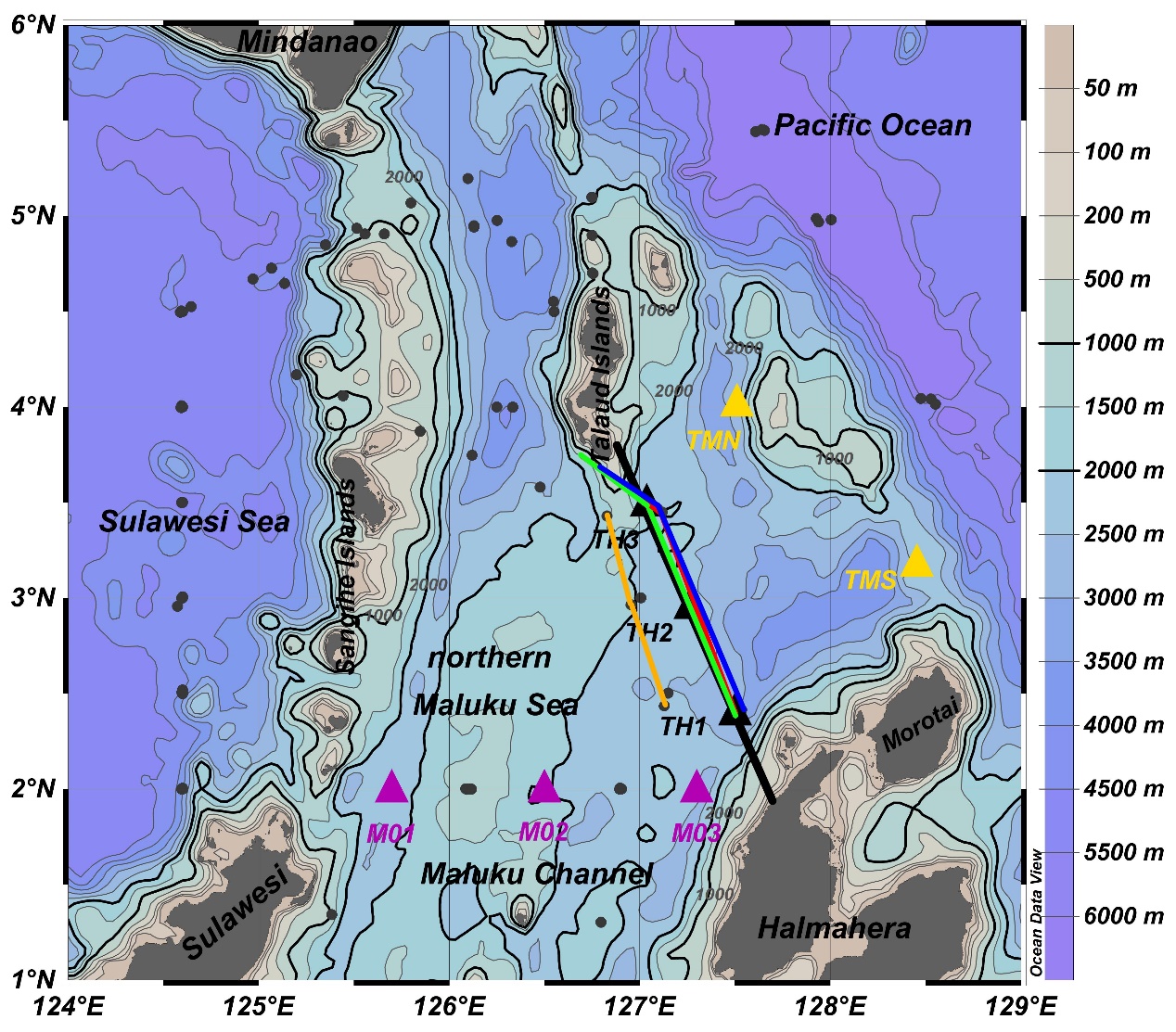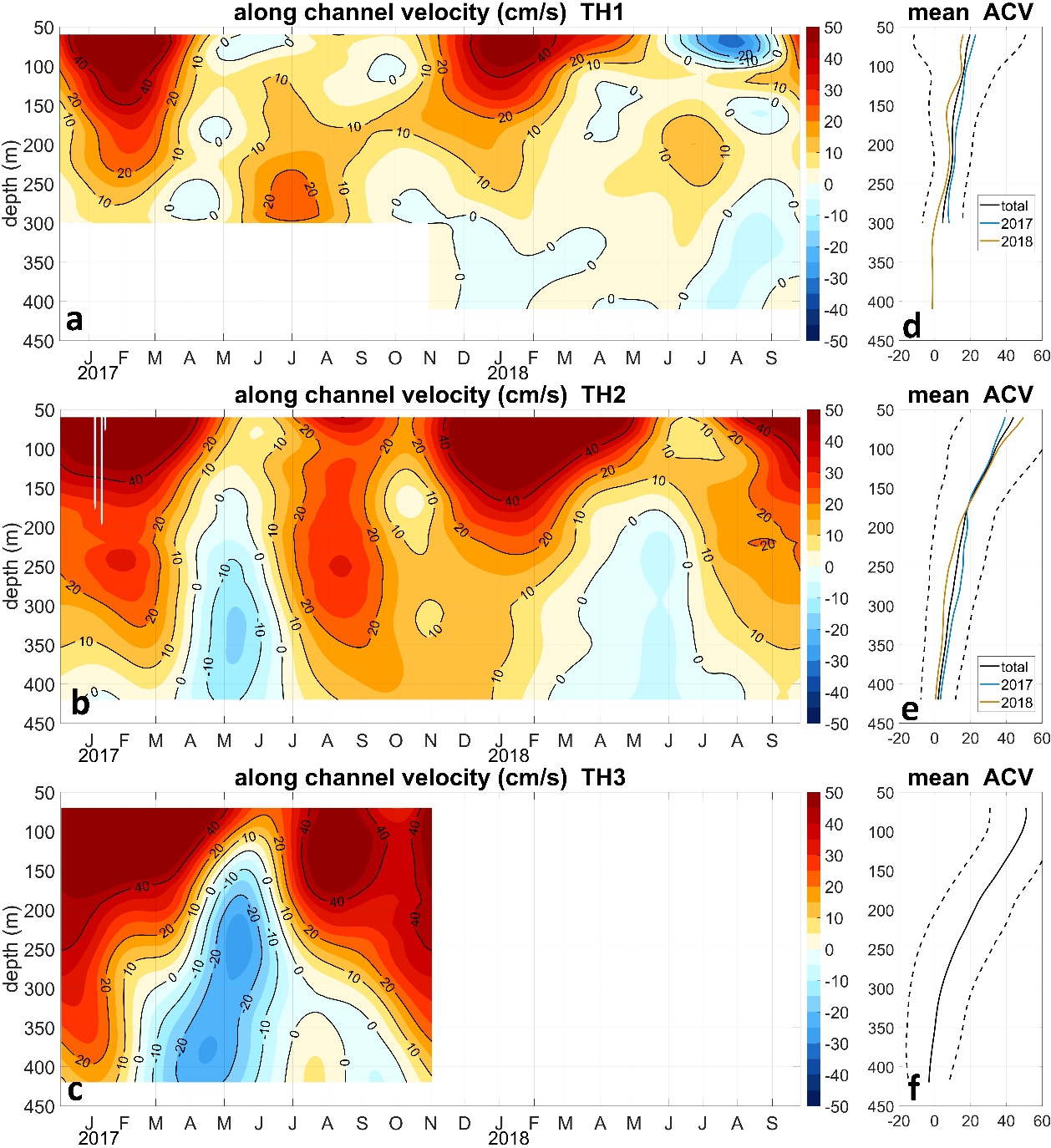Two western boundary currents (WBCs), the Mindanao Current and the New Guinea Coastal Current/Undercurrent, meet at the entrance of the Indonesian seas, forming the so-called water mass crossroads of the Global Ocean Conveyer Belt, which is important to global climate.
Previous studies have focused on the ocean circulation east of the Sulawesi Sea and Maluku Sea, the variability of the currents in the northern Maluku Sea has not been observed and studied before.
Existing studies have suggested the importance of Rossby wave reflection at the Pacific western boundary for El Nino/Southern Oscillation (ENSO) cycling, assuming linear dynamics in the investigation of ENSO-related circulation and climate variability.
Since 2014, a major Western Pacific Ocean Circulation-Indonesian Throughflow (WPOC-ITF) mooring array has been constructed in the western Pacific and Indonesian seas by the Institute of Oceanology of the Chinese Academy of Sciences (IOCAS). Subsurface moorings have been deployed in the eastern Indonesian Seas according to the cooperative agreement between IOCAS and the Research Center for Oceanography, Indonesian Institute of Sciences (RCO/LIPI). Three moorings were deployed in the channel between the Talaud and Halmahera Islands (TH Channel) from December 2016 to September 2018, based on which the seasonal movement of the Mindanao Current retroflection is studied.
The study was published in Journal of Physical Oceanography.
The moored current meters show that the currents in the TH Channel are northeastward in boreal winter and southwestward in summer in the upper ocean, with along-channel currents dominated by low-frequency signals at periods longer than 150 days. The estimated mean volume transport is 10.1-13.2 Sv during 2016-2017, forming the origin of the North Equatorial Counter Current of the Pacific Ocean.
The observations have thus evidenced strong seasonal movement of the Mindanao Current retroflection, which is supported by satellite sea level and ocean color observations, showing a cyclonic intrusion into the northern Maluku Sea in boreal winter whereas a leaping WBC north of the Talaud Islands in summer. The current shifting can be explained by the nonlinear collision of the two WBCs, which are subject to bifurcation and hysteresis.
The results are of paramount importance for the Rossby wave reflection at the Pacific western boundary, "Rossby waves could either penetrate through the looping WBC, or blocked by a leaping WBC, or induce waves of opposite signs through a shifting WBC in the Sulawesi Sea," said Prof. YUAN Dongliang.
This study was supported by the National Key Research and Development Program of China, National Natural Science Foundation of China, the Strategic Priority Research Program of the Chinese Academy of Sciences, Pilot National Laboratory for Marine Science and Technology (Qingdao), and the Shandong Provincial projects.

Fig. 1 TH Channel mooring locations

Fig. 2 Velocity time-series and mean profiles of moored acoustic Doppler current profiler (ADCP) current meters in the TH Channel

Fig. 3 Surface circulation in (a) January and (b) June in a MPIOM model simulation. The color shadings represent the sea surface height (SSH; cm).
Li X., Yuan D.*, Li Y., Wang Z., Wang J., Hu X., Yang Y., et al. (2021). Moored observations of currents and water mass properties between Talaud and Halmahera Islands at the entrance of the Indonesian seas. J. Phys. Oceanogr., 51, 3557-3572. https://doi.org/10.1175/JPO-D-21-0048.1.
Yuan, D.*, Song, X., Yang, Y., & Dewar, W. K. (2019). Dynamics of mesoscale eddies interacting with a western boundary current flowing by a gap. J. Geophys. Res.: Oceans, 124, 4117-4132. https://doi.org/10.1029/2019JC014949.
Yuan D.*, Li Xiang, et al. (2018). Observed Transport Variations in the Maluku Channel of the Indonesian Seas Associated with Western Boundary Current Changes. J. Phys. Oceanogr., 48(8), 1803-1813.
YUAN Dongliang
Institute of Oceanology
E-mail: dyuan@qdio.ac.cn
(Editor: ZHANG Yiyi)
|
|

Address: 7 Nanhai Road, Qingdao, Shandong 266071, China
Tel: 86-532-82898902 Fax: 86-532-82898612 E-mail: iocas@qdio.ac.cn


